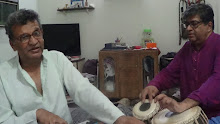Resume Writing tips for 2021
May 07, 2021
How Social Media is Killing Our Time?
May 07, 2021
Sexual Harassment of women
May 13, 2021
Categories
- animals and birds (1)
- arts (1)
- AUTOMOBILES (4)
- baba Ramdev (1)
- biography (2)
- books (4)
- Business (33)
- Carrier and Jobs (27)
- comparison (9)
- CORONA (6)
- crusades (1)
- cryptocurrency (4)
- digital marketing (9)
- education (4)
- ENTERTAINMENT (11)
- exercise and Yoga (10)
- Facts (5)
- fashion (1)
- Festivals (5)
- finance and investment (5)
- fine print (1)
- food and recipes (29)
- Games (2)
- General Knowledge (19)
- guest post (1)
- guitar (1)
- HEALTH AND FITNESS (48)
- hesitancy (1)
- Hindustan (1)
- history (5)
- holy war (1)
- how to earn (14)
- IMA (1)
- India (1)
- insurance (1)
- jehadi (1)
- jihad (1)
- Lic (1)
- life insurance (1)
- LIFESTYLE (76)
- medical (1)
- Motivation (35)
- music guru (1)
- nature (7)
- online tutorials (1)
- patanjali (1)
- piano (1)
- poetry (18)
- policy (1)
- politics (2)
- programming language (3)
- psychology and philosophy (5)
- Relationships (1)
- sanatan (1)
- Science and TECHNOLOGY (32)
- secular (1)
- share market (5)
- skills (25)
- social media (12)
- society (26)
- Sports (5)
- Stories (6)
- tabla (1)
- terrorism (1)
- tour and travels (20)
- tuition (1)
- universal (10)
- Vaccine (1)
- virus (1)
- vocal (1)
- worldwide (4)
- Writing (3)
HOW TO ANALYSE A POETRY?
The Factual Cosmos
May 04, 2021
Results are out. Yesterday's cookie turned out into a piece of cardboard. By tge way, Clearly I need a lot more practise in baking funny smelling cookies, but even more than that.
I have always wanted to understand how to dissect a poetry.
Here's a short rundown on what might be helpful in the challenging art of analysing a good poetry
- Begin with the title. A big. fat clue is generally buried under the title. It might be a good idea. to pause at the title and develop your own unbiased interpretation to it before
you proceed any further. In some instances, a title could also be an antithesis to the succeeding piece.
-Size the poetry. Feel its physical dimensions. Notice the way the lines have been arranged or have been let loose. Check the density of the sentences. Following which read the poetry aloud once or twice.
- Listen to the words falling out.
Do they echo?
Is there a cadence to them?
How are the lines broken?
Is it only visual or is there more?
Where does the poet pause?
The last word before a line breaks is usually crucial. This literary device, enjamoment, allows for us to add complexity creates a tension, while playing with syntax.
– Identify the speaker of the poem.
Whose perspective is it written from? Learning about the poet's background also
provides contextual clues which could be hard to interpret otherwise.
- Look out for repetitions. They may be intended.
- Look out for literary techniques and devices. Identify the pattern of rhymes. Identify the tone of the poem.
Is it happy, bitter, sad, angry?
Is it figurative or literal?
- Pay attention to the opening and closing lines.
- Paraphrase the poem line by line in simple language. Having said that, there is no definite answer to this. To me, each poem is like a jumbled letter puzzle and each of us can interpret it very differently. And that I believe, is the beauty of poetry.
Posted by The Factual Cosmos
Hi, This is Jitendra kumar Jain, graduated in English literature, politics and history. My hobbies are find New thing And represent it.You may like these posts
Random Post
3/random/post-list
Translate
Footer Menu Widget
Created By SoraTemplates | Distributed By Gooyaabi Templates



Social Plugin